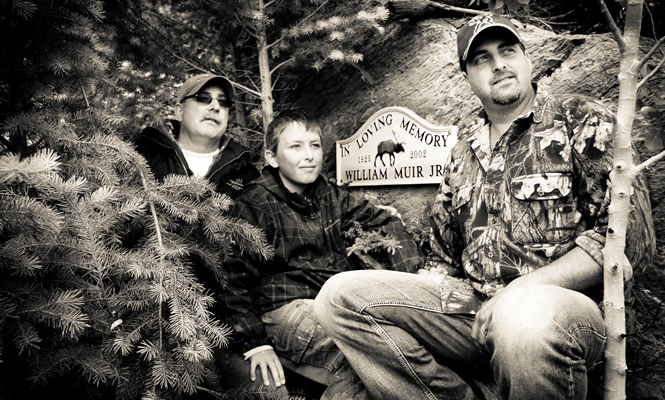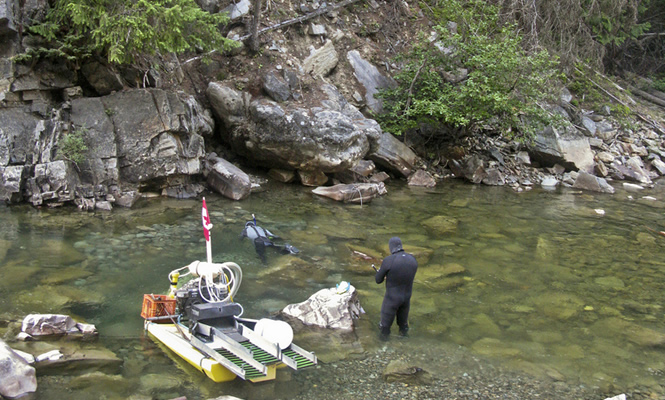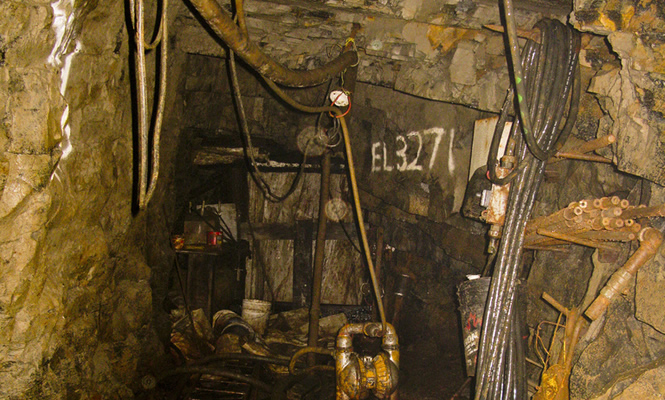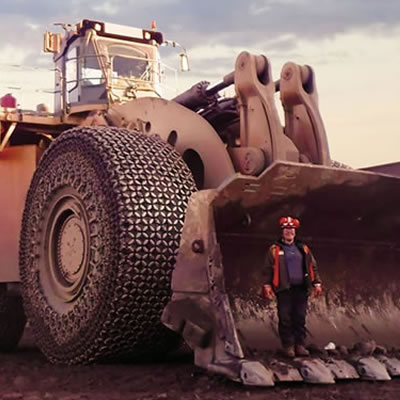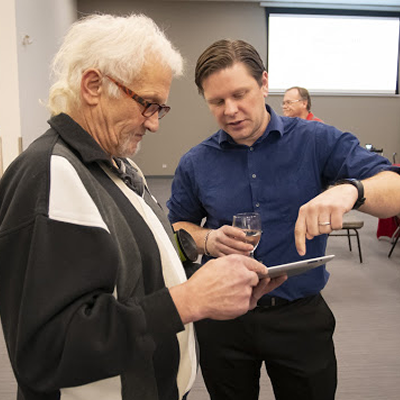Underground for four generations
Four generations of the Muir family have been devoted to the mining trade—all with strong backs and a strong work ethic
The Muir family, all born and raised in Kimberley, British Columbia, have gold, lead and zinc flowing through their veins. Shawn Muir, 36, is the eldest son of Bill Muir, 54; these two men and Bill’s father and grandfather, who have both passed away, all worked at Teck Cominco's Sullivan Mine in Kimberley—four generations of hard-core miners, with the lifestyle embedded in their blood.
A rich history
Bill Muir has been mining since 1973; he started out at Fording Canadian Coal and has never looked back. Bill worked at the Sullivan Mine for 28 1/2 years before it closed in 2001. Bill has worked in all aspects of development mining and he gained significant experience at the Sullivan performing various jobs. The Sullivan Mine was a big mine, according to Bill, and produced mostly lead and zinc.
“It was good work, hard work and involved lots of manual labour," said Bill. "I learned a lot working there and that experience has helped me wherever I go now. My grandfather worked there, my dad worked there and my first-born son worked there. My grandfather retired in 1965 but I worked shifts with my dad, who was a supervisor . . . it was pretty big boots to fill.”
Bill’s father was just 18 years old when he started working at the Sullivan. He was a miner there until the Second World War, when he joined the navy and served as a gunner on a corvette escort ship. Upon his arrival back in Kimberley, Bill's father returned to the mine. After 43 years of hard work, he retired in 1980.
The Sullivan closed down in 2001; this was a huge blow to everyone in the area including miners, their wives and family and the community as a whole. The mine was an integral part of the community: creating jobs, funding local arenas and centres and bringing money into the city of Kimberley.
“It was very sad to close something that the whole town depended on,” said Bill.
A family affair
Bill’s son Shawn started working at the Sullivan when he was just 20 years old.
“It was convenient; the mine was right here and it was very good money. Growing up, all I ever heard was Dad and Grandpa talking about mining. It’s in my blood. My dad wanted me to go to school, didn’t want me to work like a dog like he did, but I always had teachers telling me, ‘It’s a good thing you got a strong back because you’re not going too far just on your good looks,' ” Shawn laughed.
As the Muirs can attest, mining is hard work—and it’s not just a job, it’s a lifestyle. Being a miner means being away from home for extended periods of time. Father and son continue to work together now at Pro Con Mining and Tunneling at BHP Billiton’s Ekati Diamond Mine in the Northwest Territories, and this provides an opportunity to at least see family in passing.
“It’s pretty good working with my dad,” Shawn said. “We’ve always been close. It’s just that I get a lot of flack from the other guys because my dad is the boss.”
Bill is a trainer now and sometimes fills in at the role of supervisor, while Shawn is a Maclean bolt operator and installs ground support. But digging together doesn’t stop there. The Muir family also work hard at a little piece of paradise right outside Cranbrook, British Columbia. They work at a gold mine there every summer for weeks at a time when they are not up north.
Lucky Friday
They Muirs and their partners call the mine Lucky Friday; no one really knows why—the name just kind of stuck. It has a rich history starting with Ridgeway, the man who discovered the ancient channel under the Moyie Falls. Ridgeway found it in 1894 but was killed while working there. His grave, which is maintained by the local Boy Scouts, sits atop the beautiful waterfall.
This claim now lies with the Oscarson family, with David Oscarson the third (also known as Red) being one of Bill’s close friends. It has been in their name since 1929, when David Oscarson Senior and a colleague started off where Ridgeway had left off. They went into the ancient channel and hand-steeled the tunnel 185 feet next to the falls and broke through into the channel. When they discovered gold there, they worked there into the war years until Oscarson Senior got a job with Cominco, which is now known as Teck Resources, at the Sullivan Mine as a timber boss and moved up to Kimberley. Oscarson Senior’s family lived down by the mine until his children were old enough to go to school. He continued to go back to work the surface parts of mine on his time off.
“I didn’t know about the area until 1994 when my brother-in-law Kevin Veline came to me and wanted to know my opinion on going underground with this claim his friend Red had,” said Bill. “I went down there and looked around at the old workings some other guys had done (people who had leased the property from the Oscarson family). I looked and said ‘we could do this.' So we got the British Columbia Mines Department involved and went through the Ministry of Environment to get proper permits and then started working there.”
Now Bill and Shawn work the Lucky Friday Mine a few weeks every summer. Side by side, they use ancient equipment, digging for gold in a mine that now reaches between 600 and 800 feet.
“I do enjoy working there,” said Shawn. "I would enjoy it more but I work underground already. But Dad needs the help and I find it interesting. You get gold fever when you find gold in there; you just want to keep going. It gets your blood pumping because you’re always thinking the motherlode is just around the corner.”
In tune with nature
The Lucky Friday Mine is also a perfect example of how well industry and the environment can be at peace with one another. The mine, situated 7.5 kilometres up Lumberton Road just west of Cranbrook, is a picturesque operation located just steps from the Moyie Falls and the Moyie River. The whole Muir family camps on the river while father and son are toiling away. Bill’s wife, Debbie, cooks up delicious meals for the men, her 80-year-old father helps in the mine, and the children have fun fishing and quadding around the property. It is a complete family affair in a pristine environment.
“We are very conscious of our environmental footprint. We follow all the ministry’s requirements when we are working,” said Bill. “We use settling ponds so no water goes into the river, and since we are mining underground, we don’t disturb any of the surface work and we plant grass all the time. The most important thing is we follow all requirements, and if we can’t make them, we don’t mine.”
Neither Bill nor Shawn can imagine doing something other than mining to make a living.
“It’s in our blood,” said Bill. “I can’t imagine doing anything else, working underground especially. It doesn’t matter where you are in Canada, if you run into a miner you have something in common.”

